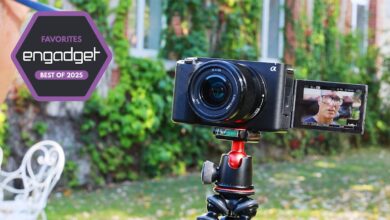Q&A: How attention, search and recall are creating more effective video ad metrics

Sponsored by A+E • May 1, 2024 • 4 min read •

Sponsored by A+E
In a complex media ecosystem, advertisers are striving to understand metrics in ways that enable holistic decision-making. The attention economy is at the heart of successful ad campaigns, so the KPIs associated with attention have become a central factor in marketing strategies.
The approach is particularly beneficial as advertisers seek more effective methods of demonstrating ROI, especially when investing in video. Impressions and views only go so far when teams need to justify spend, while attention metrics can connect conversions and actions to eyeballs on a screen.
In this Q&A, Suzanne Persechino, senior vice president of revenue research at A+E, and Roseann Montenes, head of audience innovation, currency and solutions at A+E, discussed using attention metrics to connect recall and search, measuring attention and implementing attention-driven insights.
How can we best define attention as a metric?
Roseann Montenes: Everybody defines attention differently; some people may take attention as engagement, some as eyeballs on the screen, or emotional connectivity to something they’re concentrating on. When talking about attention, it’s up to media partners like us to investigate what they’re looking to achieve and accomplish. We have to clearly identify and challenge the brands and agencies to let us in to help them solve that attention problem — we’re also looking to solve it holistically as a community within the media industry.
Why is attention on everyone’s mind lately, and how are advertisers using it?
Suzanne Persechino: We all know how rapturous marketers have become in wanting to attract and then sustain our gaze — we’re living in this attention economy. So, it’s a natural evolution that marketers would want to take something as natural as attention, quantify it and make it into a KPI so they can incorporate it within the various metrics that they track and trend over time. From a data analytics perspective, it’s really exciting because attention has gotten a lot of traction — and I see a lot of different ways in which it’s being used, which indicates just how agile the metric is. For example, some marketers use it in their media mix modeling to correlate attention and sales. Others are studying partial versus full gaze or how attention changes when you’re co-viewing or when other people are in a room watching an event together. It really depends on your business objective or what you are aiming to learn more about.
How is A+E helping its advertising partners connect attention to recall?
Suzanne Persechino: We studied attention for several years and knew it was important, but we wanted to think about what needed to happen next. For example, was the ad recalled, and did that recollection prompt an action? In this case, we are defining ‘action’ as search.
InterAction is our newest development, which studies a trio of metrics: attention, recall and search. The attention aspect is powered by TVision, recall by MarketCast Brand Effect and search by EDO’s large behavioral dataset. InterAction analyzes the interplay of these metrics to demonstrate how our audience is valuable to our advertising partners.
An attention-focused campaign relies on delivering ads to an audience that will actually see the campaign. How is A+E delivering this outcome across different platforms and environments?
Roseann Montenes: When we talk about attention, we are talking about a lot of the metrics that Suzanne’s talking about within the methodology for InterAction, where we’re actually getting the eyeballs powered by TVision to get the attention based off of the creative that they’re viewing as well as the content. It’s up to us to engage with them wherever they may be and wherever they’re consuming our content. So, just because they’re sitting on their couch and consuming it on their iPad doesn’t mean we shouldn’t serve them in the right place at the right time. Or, if they’re sitting in their living room on their couch watching it through CTV or watching it live on one of our channels — it’s up to us to know our audience and speak to them appropriately.
So, if we’re talking to them the right way on the front end, the measurement will follow suit organically, and we will have their attention and engagement — we will have that conversion rate because we know that we converted the household. So, being able to talk to the right people — not just the right target — we then have that natural progression of attribution to performance. Then, on top of that, we layer our PerforMAX solution, which measures multiple pieces of the funnel for a campaign that can be tailored to what matters most to our clients, whether it’s delivery on these attention metrics, search and beyond. We pair that with guarantees on business outcomes.
Suzanne Persechino: We know how important it is for our content — and our advertising partner’s messages — to communicate effectively with people across a multitude of platforms. Yet, there is a slew of inconsistent metrics in the ecosystem. We intentionally developed InterAction with data partners who measure multiple screens so we could give an apples-to-apples view of how our content is performing and then marry it with clients’ advertising efforts.
Sponsored by A+E
https://digiday.com/?p=543514


